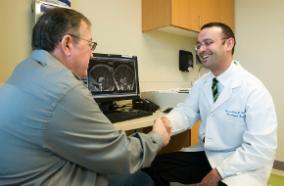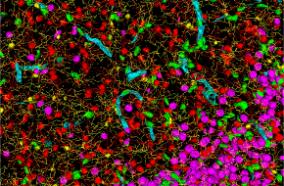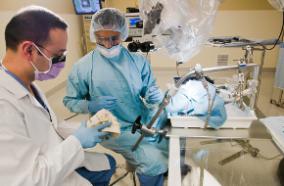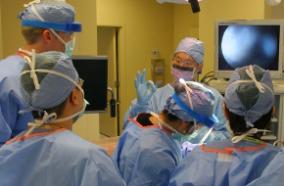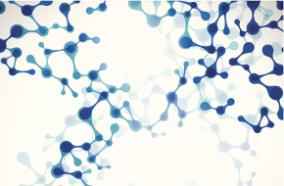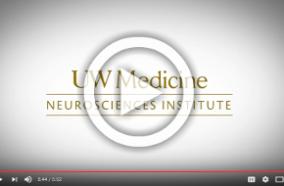Related Articles
Factors associated with syrinx size in pediatric patients treated for Chiari malformation type I and syringomyelia: a study from the Park-Reeves Syringomyelia Research Consortium.
J Neurosurg Pediatr. 2020 Mar 06;:1-11
Authors: Hale AT, Adelson PD, Albert GW, Aldana PR, Alden TD, Anderson RCE, Bauer DF, Bonfield CM, Brockmeyer DL, Chern JJ, Couture DE, Daniels DJ, Durham SR, Ellenbogen RG, Eskandari R, George TM, Grant GA, Graupman PC, Greene S, Greenfield JP, Gross NL, Guillaume DJ, Heuer GG, Iantosca M, Iskandar BJ, Jackson EM, Johnston JM, Keating RF, Leonard JR, Maher CO, Mangano FT, McComb JG, Meehan T, Menezes AH, O'Neill B, Olavarria G, Park TS, Ragheb J, Selden NR, Shah MN, Smyth MD, Stone SSD, Strahle JM, Wait SD, Wellons JC, Whitehead WE, Shannon CN, Limbrick DD, Park-Reeves Syringomyelia Research Consortium Investigators
Abstract
OBJECTIVE: Factors associated with syrinx size in pediatric patients undergoing posterior fossa decompression (PFD) or PFD with duraplasty (PFDD) for Chiari malformation type I (CM-I) with syringomyelia (SM; CM-I+SM) are not well established.
METHODS: Using the Park-Reeves Syringomyelia Research Consortium registry, the authors analyzed variables associated with syrinx radiological outcomes in patients (< 20 years old at the time of surgery) with CM-I+SM undergoing PFD or PFDD. Syrinx resolution was defined as an anteroposterior (AP) diameter of ≤ 2 mm or ≤ 3 mm or a reduction in AP diameter of ≥ 50%. Syrinx regression or progression was defined using 1) change in syrinx AP diameter (≥ 1 mm), or 2) change in syrinx length (craniocaudal, ≥ 1 vertebral level). Syrinx stability was defined as a < 1-mm change in syrinx AP diameter and no change in syrinx length.
RESULTS: The authors identified 380 patients with CM-I+SM who underwent PFD or PFDD. Cox proportional hazards modeling revealed younger age at surgery and PFDD as being independently associated with syrinx resolution, defined as a ≤ 2-mm or ≤ 3-mm AP diameter or ≥ 50% reduction in AP diameter. Radiological syrinx resolution was associated with improvement in headache (p < 0.005) and neck pain (p < 0.011) after PFD or PFDD. Next, PFDD (p = 0.005), scoliosis (p = 0.007), and syrinx location across multiple spinal segments (p = 0.001) were associated with syrinx diameter regression, whereas increased preoperative frontal-occipital horn ratio (FOHR; p = 0.007) and syrinx location spanning multiple spinal segments (p = 0.04) were associated with syrinx length regression. Scoliosis (HR 0.38 [95% CI 0.16-0.91], p = 0.03) and smaller syrinx diameter (5.82 ± 3.38 vs 7.86 ± 3.05 mm; HR 0.60 [95% CI 0.34-1.03], p = 0.002) were associated with syrinx diameter stability, whereas shorter preoperative syrinx length (5.75 ± 4.01 vs 9.65 ± 4.31 levels; HR 0.21 [95% CI 0.12-0.38], p = 0.0001) and smaller pB-C2 distance (6.86 ± 1.27 vs 7.18 ± 1.38 mm; HR 1.44 [95% CI 1.02-2.05], p = 0.04) were associated with syrinx length stability. Finally, younger age at surgery (8.19 ± 5.02 vs 10.29 ± 4.25 years; HR 1.89 [95% CI 1.31-3.04], p = 0.01) was associated with syrinx diameter progression, whereas increased postoperative syrinx diameter (6.73 ± 3.64 vs 3.97 ± 3.07 mm; HR 3.10 [95% CI 1.67-5.76], p = 0.003), was associated with syrinx length progression. PFD versus PFDD was not associated with syrinx progression or reoperation rate.
CONCLUSIONS: These data suggest that PFDD and age are independently associated with radiological syrinx improvement, although forthcoming results from the PFDD versus PFD randomized controlled trial (NCT02669836, clinicaltrials.gov) will best answer this question.
PMID: 32114543 [PubMed - as supplied by publisher]

